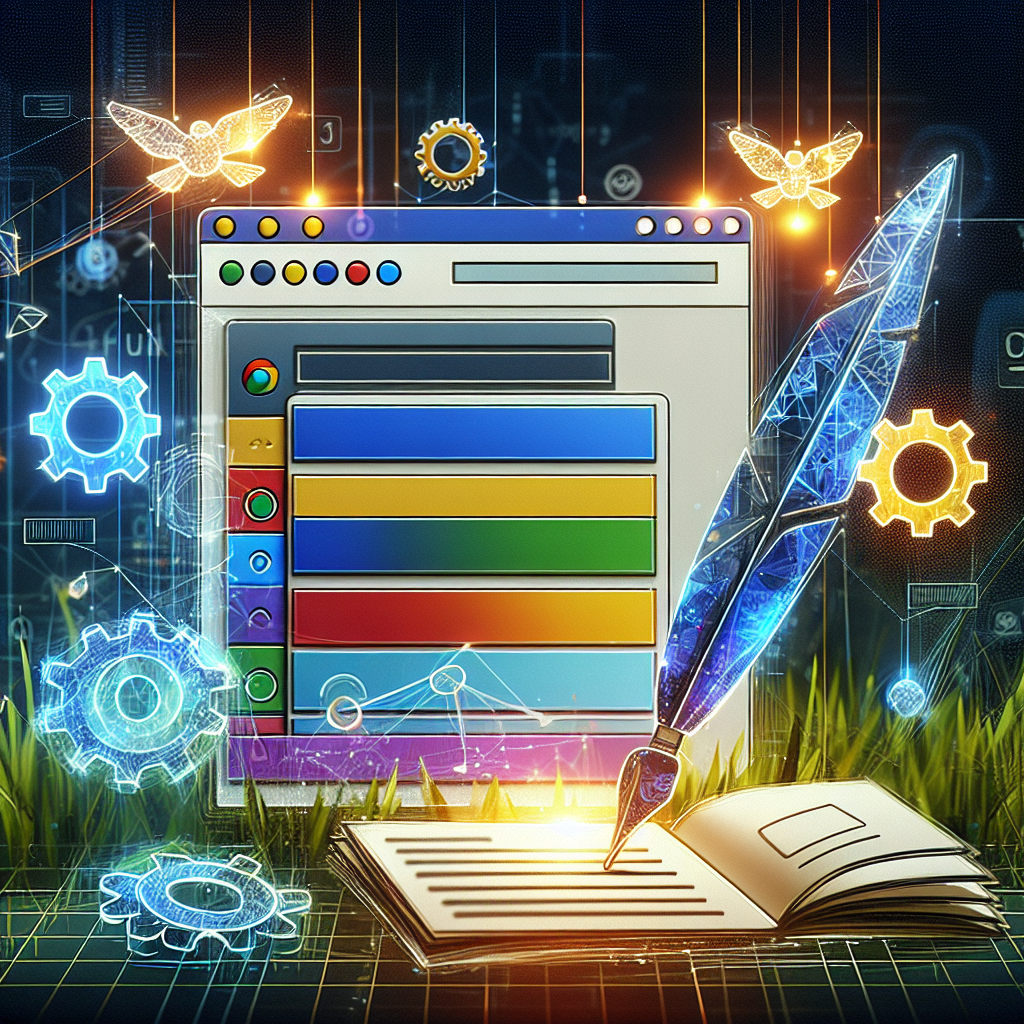Integration of Generative AI in Software Applications
The landscape of software applications is undergoing a transformative change with the integration of generative AI technologies. These advanced machine learning algorithms have the capability to create content, such as images, text, and sound, that was once thought to be the exclusive domain of human creativity. Leading software applications like Adobe Photoshop and Microsoft Windows have already incorporated AI-driven features, enabling users to perform tasks that were previously impossible or highly time-consuming. This trend signifies a major leap in how we interact with and utilize software, paving the way for more intuitive and efficient user experiences. Have you considered how generative AI in software might change the way you work or play? Learn more about AI in software applications.
Google Chrome’s AI Update
The latest v121 Google Chrome AI update marks a significant advancement in the browser’s capabilities, introducing an ‘Experimental AI’ field within the Settings page. This new addition showcases Google’s commitment to harnessing the power of machine learning to enhance user experience. Currently, these innovative features are exclusively available to users in the United States, with access restricted for those operating under enterprise or educational accounts. This strategic rollout reflects the tech giant’s cautious approach in deploying AI tools to the broader market. The update could lead to faster and more efficient browsing, but it also raises questions about privacy and data security.
AI-Powered Tab Organization
The first AI tool introduced in the Google Chrome update is a machine learning-powered feature designed to organize open tabs into groups. This AI-powered tab organization tool is particularly aimed at users who frequently find themselves with a cluttered browser, overwhelmed by numerous tabs. The AI suggests and creates tab groups based on the content and context, potentially streamlining the browsing experience for those who tend to accumulate tabs. While the concept is innovative, its practicality may be questioned, as organizing tabs is not typically seen as a challenging task. Nonetheless, for tab hoarders or those who simply never close them, this feature could offer a much-needed solution to browser disarray.
Generative AI for Chrome Themes
The second AI tool in the Google Chrome update leverages generative AI to create personalized themes for users’ browsers. This process begins with the user typing a few descriptive words into the theme generator. The AI then interprets these inputs and offers a selection of six potential themes that reflect the described concept. Users can control the generation process through various options, ultimately choosing their preferred theme from the generated results. While the tool provides a novel way to customize one’s browsing environment, its long-term practicality may be limited. After the initial excitement wears off, it’s likely that many will settle on a single theme for extended periods, reducing the frequency of use for this creative feature. 
AI-Assisted Writing in Chrome
The third AI tool in the Google Chrome update is an AI-assisted writing feature, reminiscent of the capabilities seen in tools like ChatGPT. This AI-assisted writing in Chrome tool is designed to help users compose text in web forms. When faced with a text box on a webpage, users can right-click and select ‘Help me write’ to activate the feature. The AI then generates a body of text based on the user’s initial input. For instance, if a user starts with the sentence ‘The RoboBot 6000 is a programmable toy robot,’ the AI model will expand on this to produce a more detailed and comprehensive piece of writing. While this tool has the potential to save time and inspire ideas, there is a concern about the reliability of AI-generated content, which may lead to an increase in inaccurate or nonsensical posts across the web.
Impact of AI Features in Google Chrome
The integration of AI features into Google Chrome, the world’s most commonly used web browser, signifies a considerable shift in the digital landscape. The impact of AI features in Google Chrome has the potential to redefine user interaction by simplifying complex tasks and fostering a more personalized browsing experience. Users interested in exploring these AI capabilities can do so by updating their Chrome browser, restarting it, and then navigating to the Settings menu to access the ‘Experimental AI’ section. As these features become more widely adopted, they may set a new standard for what users expect from their software applications, driving innovation and competition across the industry. Discover the broader impact of AI on the tech industry.

